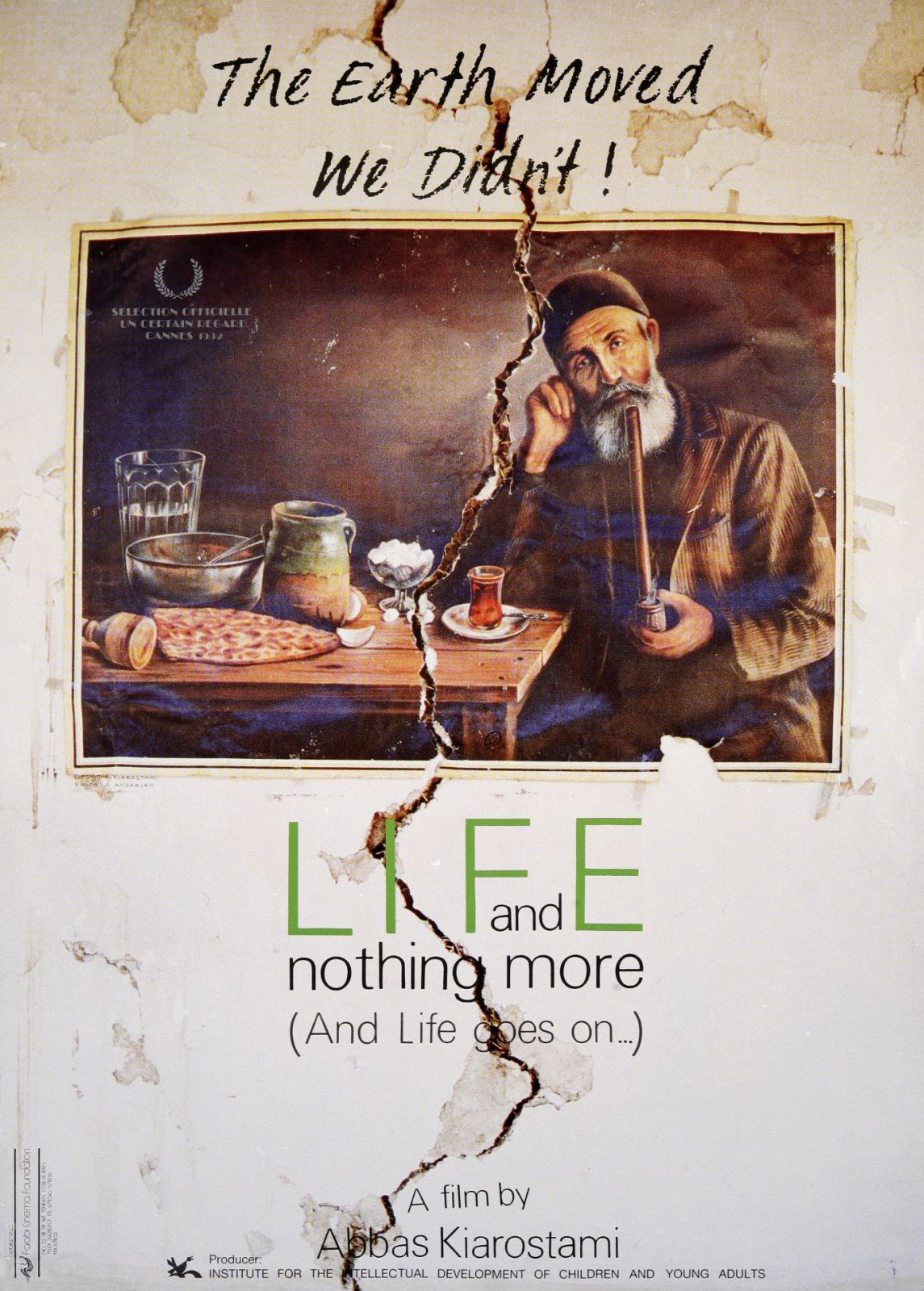Introduction:
In the realm of world cinema, certain films transcend the boundaries of storytelling, offering not just a narrative but an immersive experience that lingers in the hearts and minds of viewers. “And Life Goes On,” a 1992 Iranian film directed by Abbas Kiarostami, stands as a poignant exploration of life, loss, and the indomitable human spirit. This comprehensive review seeks to delve into the thematic depth, visual brilliance, and emotional resonance that define this cinematic masterpiece.
Section 1: The Context of Iranian Cinema in the 1990s
1.1 Post-Revolutionary Iran: Shaping a Cinematic Identity
“And Life Goes On” emerges from the backdrop of post-revolutionary Iran, a period marked by sociopolitical shifts and the evolution of Iranian cinema. Abbas Kiarostami, a leading figure in the Iranian New Wave, uses his cinematic lens to capture the essence of a nation rebuilding and rediscovering itself amidst the aftermath of the Iran-Iraq War.
1.2 Kiarostami’s Contribution to Iranian Cinema
Abbas Kiarostami, revered as one of the most influential filmmakers in Iranian cinema, is known for his distinctive storytelling style and innovative narrative techniques. “And Life Goes On” is a testament to Kiarostami’s ability to blend realism with poetic storytelling, creating a cinematic language that transcends cultural boundaries.
Section 2: Narrative Complexity and Thematic Depth
2.1 The Journey Unfolds: A Director’s Odyssey
“And Life Goes On” follows a film director’s journey to the earthquake-stricken region of northern Iran, where he searches for the child actors of his previous film, “Where Is the Friend’s Home?” The narrative complexity lies not only in the director’s physical journey but in the layers of metaphorical exploration, touching on themes of resilience, continuity, and the cyclical nature of life.
2.2 Life as Art and Art as Life
Kiarostami blurs the lines between fiction and reality, creating a narrative that mirrors life’s unpredictability. The film within a film concept serves as a metaphor for the intersection of life and art. The director’s quest becomes a reflection of the human experience, where the pursuit of answers is as vital as the journey itself.
Section 3: Visual Poetics and Cinematic Brilliance
3.1 Landscapes as Characters: Cinematic Aesthetics
Kiarostami’s visual mastery comes to the forefront in “And Life Goes On.” The landscapes of post-earthquake Iran become characters in their own right, conveying a silent yet powerful narrative. The director’s use of long takes, natural lighting, and breathtaking scenery immerses viewers in a visual poetics that captures the stark beauty of the Iranian terrain.
3.2 Symbolism and Cinematic Language
Symbolism permeates every frame of the film, from the remnants of earthquake destruction to the resilient spirit of the people. Kiarostami’s use of symbols transcends cultural boundaries, creating a cinematic language that communicates universal truths. Every visual element serves a purpose, inviting viewers to decipher the layers of meaning woven into the fabric of the narrative.
Section 4: Human Resilience and Collective Memory
4.1 Resilience in the Face of Tragedy
“And Life Goes On” is a testament to the resilience of the human spirit. In the aftermath of a devastating earthquake, the characters portrayed in the film epitomize strength, adaptability, and the capacity to rebuild. Kiarostami captures the essence of a community grappling with loss, yet refusing to be defined solely by tragedy.
4.2 Collective Memory and National Identity
The film also serves as a meditation on collective memory and the shaping of national identity. In revisiting the earthquake-stricken region, Kiarostami underscores the importance of remembering and honoring the past. The reconstruction efforts become symbolic not only of physical rebuilding but also of the enduring spirit that defines a nation.
Section 5: Reflections on Filmmaking and Reality
5.1 Meta-Cinematic Elements: A Commentary on Filmmaking
Kiarostami’s meta-cinematic approach elevates “And Life Goes On” to a realm of introspection on the nature of filmmaking itself. The film director’s journey becomes a self-reflexive exploration, inviting viewers to consider the intersections between cinema and reality. Kiarostami challenges conventional storytelling, offering a contemplative space for audiences to question the boundaries of fiction and documentary.
5.2 The Filmmaker’s Responsibility: Ethics of Representation
The ethical dimensions of representation are a crucial aspect of “And Life Goes On.” Kiarostami grapples with the responsibility of a filmmaker to authentically portray the lives of those affected by tragedy. The film raises questions about the balance between capturing reality and respecting the dignity of the subjects, adding layers of complexity to the narrative.
Section 6: Critical Reception and International Impact
6.1 Cannes Film Festival Recognition
“And Life Goes On” received acclaim on the international stage, with its premiere at the Cannes Film Festival in 1992. The film’s recognition at Cannes highlighted its universal appeal and its ability to resonate with audiences across cultural divides. Kiarostami’s unique narrative approach and cinematic artistry garnered admiration from critics and cinephiles alike.
6.2 Legacy and Influence on Global Cinema
The legacy of “And Life Goes On” extends far beyond its initial release. The film’s influence on global cinema is evident in the works of filmmakers who have been inspired by Kiarostami’s storytelling techniques and visual poetics. The film’s enduring impact lies in its ability to transcend cultural specificity, offering a profound meditation on the human experience.
Section 7: Conclusion
In conclusion, “And Life Goes On” stands as a cinematic masterpiece that transcends conventional storytelling, inviting viewers on a journey of introspection and reflection. Abbas Kiarostami’s narrative complexity, visual brilliance, and thematic depth create a film that resonates on multiple levels. As a pivotal work in Iranian cinema, “And Life Goes On” contributes to the rich tapestry of narratives emerging from a nation in flux, capturing the resilience of the human spirit amidst the challenges of life. Its enduring legacy lies in its capacity to evoke empathy, challenge cinematic norms, and offer a timeless meditation on the interconnectedness of life, art, and the indomitable force that propels us forward, even in the face of adversity.
